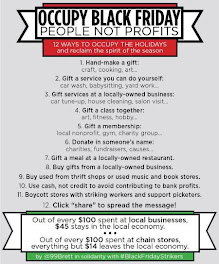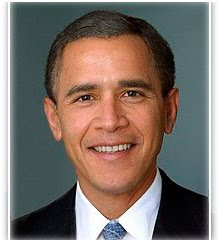To worsen matters on the last point, President Obama is dozens of potential allies on health reform. Meet Brooklyn/Queens (New York City) Congressman Anthony Weiner. And note well, how Obama responded to Weiner's hewing closer to principles with "I hope you are enjoying your last trip on Air Force One."
John Heilemann, "Back From the Death Panel: How the public option, helped by a congressman looking for an issue and a shrewdly silent White House, returned from the brink" "New York Magazine," October 11, 2009
On the night last week when much of Washington was joyously weeping over the seal of approval bestowed on the Baucus health-care bill by the Congressional Budget Office, Anthony Weiner was in his quarters in the Rayburn Building, merrily pissing all over the legislation instead. “It’s just too weak,” he told me. “It doesn’t do enough. It doesn’t achieve real cost savings. There’s no real competition. It’s pretty much a wish list for the insurance companies.” And those were merely Weiner’s substantive criticisms of the bill. His political assessment was even harsher: “It’s effectively dead,” he said.
Not a droplet of Weiner’s dismissal of the Baucus plan came as any sort of shock; he’s been trashing the Senate Finance Committee’s efforts for weeks. What’s surprising is that anyone gives a fig what Weiner has to say about the topic in the first place. Until six months ago, after all, the congressman was known more for his yearning to acquire the keys to Gracie Mansion than his mastery of the arcana of Medicare reimbursement rates. In fact, as Weiner would be the first to admit, his interest in, knowledge of, and record on health-care reform were perilously close to nonexistent.
And yet, since May, when he concluded that taking on Mike Bloomberg was a challenge that went beyond the Sisyphean into the realm of the just plain silly, Weiner has emerged as one of the few real stars in the marathon health-care debate: the clearest and savviest (and, as always, loudest and noodgiest) voice in favor of the public option. And though it’s plain that whatever bill eventually lands on Barack Obama’s desk—and, yes, I think the odds are now close to overwhelming that a big pile of health-care paper will wind up there—won’t be anything close to Weiner’s single-payer dream, his role in framing the terms of the discussion has been more than salutary. In some non-obvious ways, you could argue that it’s been essential.
I should confess at the outset that I have a long-standing soft spot for Weiner, whom I first met more than twenty years ago, when he was a budding Chuck Schumer protégé and we played on the same Capitol Hill softball team. Weiner then was strikingly similar to Weiner now: amped-up, ambitious, wicked smart, forever gauging all the angles, unafraid of being (actually, proud of being) a royal pain in the tuchis. All the qualities, in other words, that have served him so well in the wrangle over health care.
Weiner describes his efflorescence on the subject as a matter of opportunism, in the best sense of the word. “This was one of those unusual issues where we really didn’t have a mother ship that was directing the message, and that created an entrepreneurial environment,” he says. “You didn’t have the president out there speaking clearly about what he wanted. And among my colleagues, there weren’t people that jumped out who either had a comfort with the material or weren’t intimidated by the blowback.” Weiner laughs. “Frankly, I like the blowback. After my thirteenth town-hall meeting, someone on my staff said, ‘I can’t tell if you’re a sadist or a masochist.’ ”
Weiner is right about the nature of the vacuum that he smartly stepped in to fill, but there are at least two other proximate causes for it that should be added to his list: the illness and death of Ted Kennedy and the migration of Hillary Clinton out of the Senate and into Foggy Bottom, which deprived the debate of what would have been its two dominant liberal protagonists. For Weiner, Clinton’s absence and its implications carry a personal twist; he is engaged to Huma Abedin, Hillary’s longtime personal aide. “It’s a weird irony that I’m kind of part of the family now and this has become my issue,” Weiner says. “If Hillary had stayed in the Senate, I would never have had this opening.”
Weiner allows that he’s discussed the health-care battle with Clinton; what she’s told him he will not say. But one imagines she approves of the cleverness and chutzpa he’s displayed—especially in drawing an explicit analogy between the public option and Medicare, an equation that not only increases support for the proposal among voters but flushes out the phoniness of the Republican howls against a “government takeover” of health care. And one similarly imagines Madame Secretary’s chagrin at watching the Obama White House pursue a dance-of-the-seven-veils strategy explicitly designed to be the antithesis of the one she employed back in 1993 and 1994.
Weiner’s view of the administration’s approach hasn’t exactly been approving—a point he’s made abundantly and consistently clear over the past months. On the eve of Obama’s September speech before a joint session of Congress, Weiner cracked that “up to now, the messaging from the White House has been done by Sybil … They seem to have a different perspective on this every couple of hours.” And he’s apparently had no change of heart. “The president has been a miserable messenger on this by and large,” he tells me.
Read more: How Anthony Weiner Helped the Public Option Return From the Brink -- New York Magazine http://nymag.com/news/politics/powergrid/59907/#ixzz0Zc6q2dVk
Back From the Death Panel
Such criticisms haven’t gone unnoticed at 1600 Pennsylvania Avenue, in no small part because Weiner—in a testament to his consistency, lunacy, inability to shut up, or all three—hasn’t shied away from making them directly. Indeed, on a recent flight back to Washington from New York on Air Force One, I’m told by one congressman who witnessed the scene, Weiner got into a testy exchange with Obama over the former’s ideas about how the latter might better prosecute the case for reform. When I ask Weiner about the incident, he refuses to divulge details, but notes that when it was over, the president said to him drily, “I hope you’re enjoying your last trip on Air Force One.” “He was kidding—I think,” adds Weiner.
In truth, Weiner has been on the receiving end of zero complaints from the White House for his potshots. “I see Rahm [Emanuel] at the House gym every morning, and he’s never beefed to me about this once,” Weiner says. “I think he needs this pressure from the left—it serves them. They needed someone to generate the heat of their base to give them the space to be the moderate voice. I’m convinced that if it weren’t me, they’d have to create me.”
Weiner’s theory is self-serving, but it makes a kind of sense. Over the summer, Weiner, by threatening to bottle up a vote on the main House health-care bill in the Energy and Commerce Committee, forced House Speaker Nancy Pelosi to grant him a floor vote this fall on a single-payer plan. Weiner believes in single-payer as a matter of policy—but he also sees the political advantage of putting forward a proposal that will at once satisfy certain elements of the base and create the appearance that the public option is itself a compromise toward the center. And his adamant advocacy of a robust public option itself generates breathing room for the sort of modified version that might win approval in both the House and Senate.
What Weiner has no doubt about now is that the final legislation will include just such a provision—because without it, there simply aren’t the votes in the House to pass a bill. “I think President Obama will put his finger on the scale at some point,” he says. In the end, it’s going to be simpler to corral one or two senators to accept a public option with some modifications than it’s going to be to get a hundred House members off their rebellious screed.
From what Weiner can divine from Emanuel and others in the White House, this kind of brass-tacks calculation—not the policy merits, not even the long-range political ramifications—is all that matters now. Obama’s bizarro, out-of-nowhere acquisition of the Nobel Peace Prize at the end of last week notwithstanding, the president has had a rough few months and badly needs to put a win on the board. And no one is looking to make that any harder than it’s been already.
To illustrate why that means the public option will prevail, Weiner colorfully sketches out his vision of the endgame: “Obama goes to Nancy and says, ‘I’ve decided I’m giving up the public option.’ And she says, ‘Well, dude, I can’t get this done then.’ So then he goes to Harry Reid and says, ‘We’re going with the public option. What do we have to do in Nebraska to get Ben Nelson onboard?’ That’s a much easier conversation.”
Read more: How Anthony Weiner Helped the Public Option Return From the Brink -- New York Magazine http://nymag.com/news/politics/powergrid/59907/index1.html#ixzz0Zc6LeVS3
















